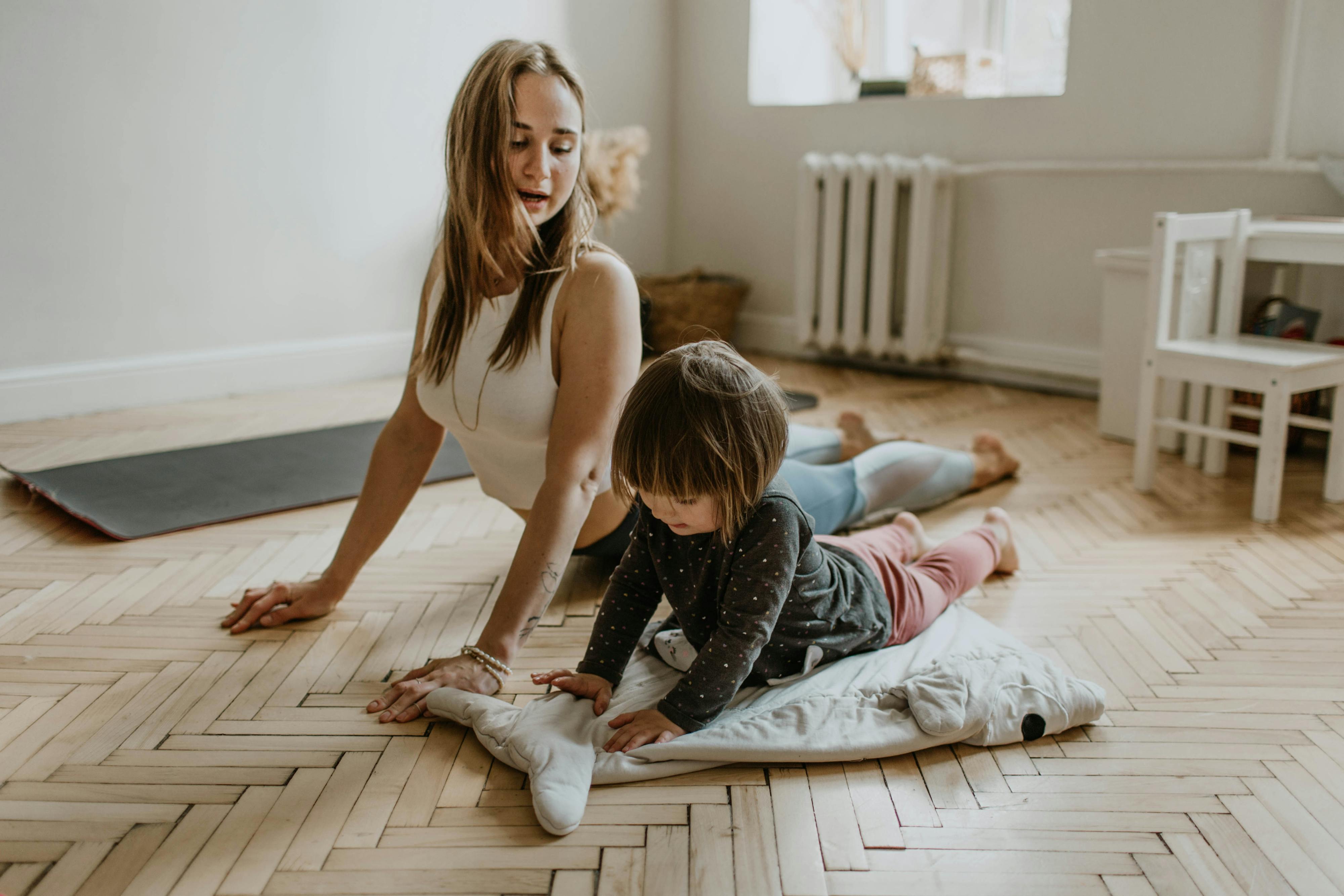Children, Asthma, and Yoga

Within the past few decades, there has been an uptick in the number of people diagnosed with asthma. At the same time, there has been renewed interest in yoga as complementary medicine for all sorts of various ailments. It stands to reason, then, that researchers would begin to focus on this intersection, and that studies would be conducted on the efficacy of a yoga practice to mitigate the effects of asthma.
At this point, scientific studies have focused primarily on two out of Patanjali’s Eight-fold path, namely asana and pranayama. In 2017, two Indian researchers in looked at past studies of pranayama and its effects on children with chronic asthma. The scholars noted that asthma attacks the body on two fronts. Physically, the lungs seize up, produce extra mucous, and narrow during an asthma attack. However, anxiety and depression go part and parcel with the disease; both of these mental states can cause hyperventilation, or shallower, faster breathing. The result of hyperventilation is a build-up of carbon dioxide in the body, which excites the nerves, thus inciting (or furthering!) the “flight or fight” response by the sympathetic nervous system. The study found that pranayama, specifically lengthened exhalations, helps to calm this pattern by balancing oxygen and carbon dioxide levels in the blood. Thus, the parasympathetic nervous system returns the body to the “befriend and tend” state, one that encourages the cessation of lung spasms like asthma.
In 2019, a further study showed the efficacy of a personal yoga practice for asthmatic children. Researchers working in four different cities – Mumbai, Nairobi, Kathmandu, and Pretoria – taught groups of children different pranayama techniques. These ranged from basic breath observation to more advanced skills: three-part breathing, Ujjayi or ocean breath, Nadi Shodhana, or alternate nostril breathing, and Kapalabhati, or Skull-Shining Breath. The results demonstrated the importance of familial support: those who lived in situations that encouraged the regular use of these techniques showed improvement in their breathing. In addition, those children who took it upon themselves to maintain a personal practice showed progress as well. These children were also better able to exercise and even lost weight during the program!
What can we learn from these studies? Taking the time to properly learn pranayama is an important step, as is making a personal commitment to an ongoing practice. The lungs benefit from specific practices, but the relaxation response, which helps with anxiety and depression, also promotes reduced inflammation and better breathing. It’s always crucial to work in tandem with one’s medical doctor, but a consistent yoga program can help. Together, personal practice and medical assistance can make a huge difference.
For further reading:
Pandya, Samta. “Yoga Education Program for Reducing Drug Dependency and Promoting Better Asthma Control for Chronic Asthmatic Children: A Multi-City Experiment.” Global Pediatric Health, Volume 6, 1-13. Found online at https://www.ncbi.nlm.nih.gov/pmc/articles/PMC6429656/pdf/10.1177_2333794X19837455.pdf
Sankar, J., Das, R.R. “Asthma – A Disease of How We Breathe: Role of Breathing Exercises and Pranayam.” Indian Journal of Pediatrics 85, 905–910 (2018). Found online at https://doi.org/10.1007/s12098-017-2519-6
At this point, scientific studies have focused primarily on two out of Patanjali’s Eight-fold path, namely asana and pranayama. In 2017, two Indian researchers in looked at past studies of pranayama and its effects on children with chronic asthma. The scholars noted that asthma attacks the body on two fronts. Physically, the lungs seize up, produce extra mucous, and narrow during an asthma attack. However, anxiety and depression go part and parcel with the disease; both of these mental states can cause hyperventilation, or shallower, faster breathing. The result of hyperventilation is a build-up of carbon dioxide in the body, which excites the nerves, thus inciting (or furthering!) the “flight or fight” response by the sympathetic nervous system. The study found that pranayama, specifically lengthened exhalations, helps to calm this pattern by balancing oxygen and carbon dioxide levels in the blood. Thus, the parasympathetic nervous system returns the body to the “befriend and tend” state, one that encourages the cessation of lung spasms like asthma.
In 2019, a further study showed the efficacy of a personal yoga practice for asthmatic children. Researchers working in four different cities – Mumbai, Nairobi, Kathmandu, and Pretoria – taught groups of children different pranayama techniques. These ranged from basic breath observation to more advanced skills: three-part breathing, Ujjayi or ocean breath, Nadi Shodhana, or alternate nostril breathing, and Kapalabhati, or Skull-Shining Breath. The results demonstrated the importance of familial support: those who lived in situations that encouraged the regular use of these techniques showed improvement in their breathing. In addition, those children who took it upon themselves to maintain a personal practice showed progress as well. These children were also better able to exercise and even lost weight during the program!
What can we learn from these studies? Taking the time to properly learn pranayama is an important step, as is making a personal commitment to an ongoing practice. The lungs benefit from specific practices, but the relaxation response, which helps with anxiety and depression, also promotes reduced inflammation and better breathing. It’s always crucial to work in tandem with one’s medical doctor, but a consistent yoga program can help. Together, personal practice and medical assistance can make a huge difference.
For further reading:
Pandya, Samta. “Yoga Education Program for Reducing Drug Dependency and Promoting Better Asthma Control for Chronic Asthmatic Children: A Multi-City Experiment.” Global Pediatric Health, Volume 6, 1-13. Found online at https://www.ncbi.nlm.nih.gov/pmc/articles/PMC6429656/pdf/10.1177_2333794X19837455.pdf
Sankar, J., Das, R.R. “Asthma – A Disease of How We Breathe: Role of Breathing Exercises and Pranayam.” Indian Journal of Pediatrics 85, 905–910 (2018). Found online at https://doi.org/10.1007/s12098-017-2519-6

Related Articles
Editor's Picks Articles
Top Ten Articles
Previous Features
Site Map
Content copyright © 2023 by Korie Beth Brown. All rights reserved.
This content was written by Korie Beth Brown. If you wish to use this content in any manner, you need written permission. Contact Korie Beth Brown for details.







